In the wilderness, possessing the skill to initiate and sustain a fire is absolutely crucial. It stands as a cornerstone for survival, providing warmth against the elements, a means to cook food, and a method to signal for assistance. Understanding a diverse range of tactical techniques is imperative to ensure preparedness even in the harshest and most adverse conditions. Let’s delve into the fundamental methods essential for both igniting and maintaining fires when navigating through the wild expanses of nature.
Fire Starting Techniques
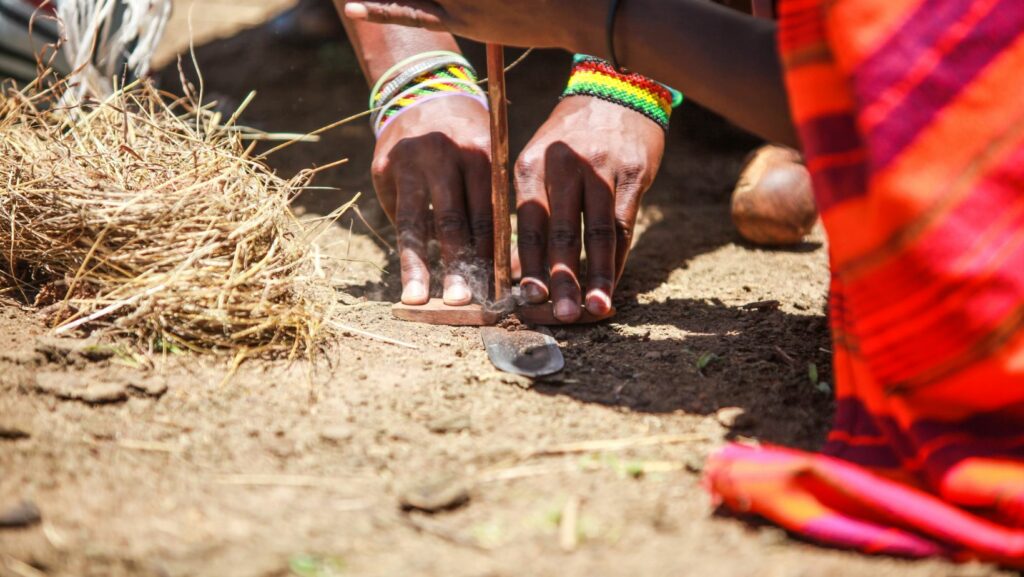
Fire starting techniques encompass various methods used to ignite fires in diverse environmental conditions. Here are some essential techniques:
- Friction-Based Methods:
- Bow Drill: Utilizes a bow to rotate a spindle against a fire board, creating friction and generating ember.
- Hand Drill: Involves rotating a stick against a fire board using hand pressure to create friction and produce ember.
- Fire Plow: Rubbing a stick forcefully along a groove in a fire board to create friction and generate heat.
- Flint and Steel:
- Striking Sparks: Using a piece of flint or quartz struck against steel to create sparks that ignite dry tinder.
- Solar Ignition:
- Using Sunlight: Focusing sunlight through a lens (like a magnifying glass) onto tinder to create heat and start a fire.
- Chemical Reactions:
- Fire Starters: Using chemical-based fire starters like potassium permanganate and glycerin or other commercial fire starters that ignite when exposed to air or flame.
- Battery and Steel Wool:
- Short Circuit Method: Touching steel wool with the positive and negative terminals of a battery to create a short circuit and generate heat, causing the wool to ignite.
- Fire Piston:
- Compression Ignition: Compressing air rapidly within a sealed chamber to create enough heat to ignite a piece of tinder.
- Magnesium Fire Starter:
- Scraping Magnesium: Scraping magnesium from a magnesium bar onto tinder, then using a striker to create sparks that ignite the magnesium shavings.
Understanding and practicing these diverse fire starting techniques equips individuals with the knowledge and skills necessary to initiate fires using available resources and in varying conditions. Each method has its strengths and suitability depending on the materials, environment, and personal proficiency, ensuring adaptability and readiness in different wilderness scenarios.
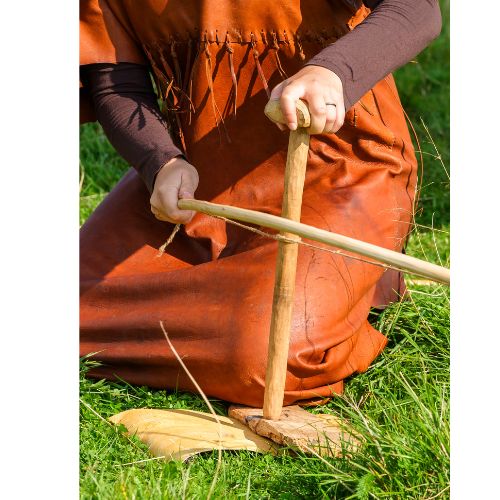
Gathering and Preparing Materials
Tinder Bundle Creation:
Collect dry, fine materials like birch bark, dry grass, or cotton balls to form a tinder bundle. Ensure it’s fluffy and readily combustible to catch a spark or ember.
Kindling and Fuel Preparation:
Gather small twigs, branches, and larger logs in advance. Gradually escalate from small kindling to larger fuelwood for sustained fires.
Fire Lay and Structure
Teepee Fire Lay:
Arrange kindling and fuelwood in a teepee shape around the tinder bundle. As the fire starts, it allows airflow, aiding combustion.
Log Cabin Fire Lay:
Create a log cabin structure by stacking kindling in a square formation around the tinder. Place larger logs around the structure. This design promotes steady burning and airflow.
Sustaining and Maintaining Fires
Adding Fuel Gradually:
Avoid suffocating the fire by adding fuel slowly and in small increments. Maintain a balance to sustain flames without smothering them.
Fire Refueling and Safety:
Continuously monitor the fire’s size and behavior. Keep a water source nearby for extinguishing if needed and clear a safety perimeter to prevent uncontrolled spread.
Conclusion
Survival in the wild hinges on firecraft proficiency. Learning diverse fire-starting methods, gathering and preparing materials, understanding fire lays, and maintaining fires are pivotal skills. By honing these techniques, individuals enhance their ability to thrive in challenging environments.
Remember, practice is key to mastering wilderness fires. Before venturing out, practice these methods in controlled settings to ensure confidence and competence in executing them when they are crucial for survival. Mastery of firecraft not only ensures warmth and sustenance but also serves as a beacon of hope in dire situations.

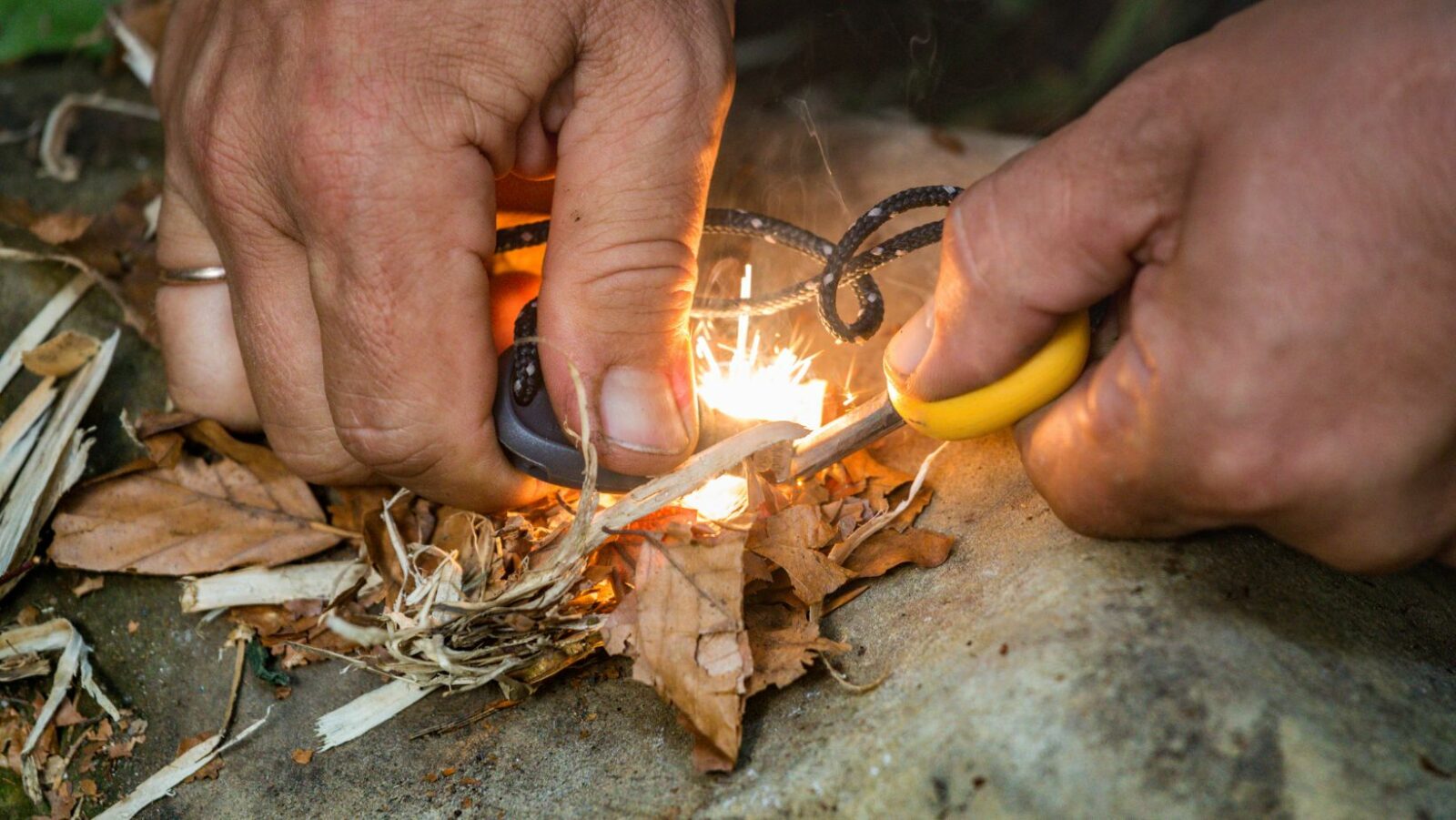

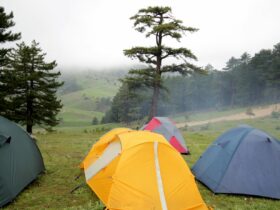
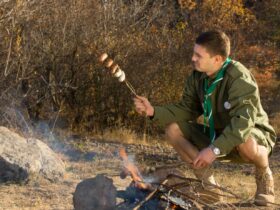

Leave a Reply